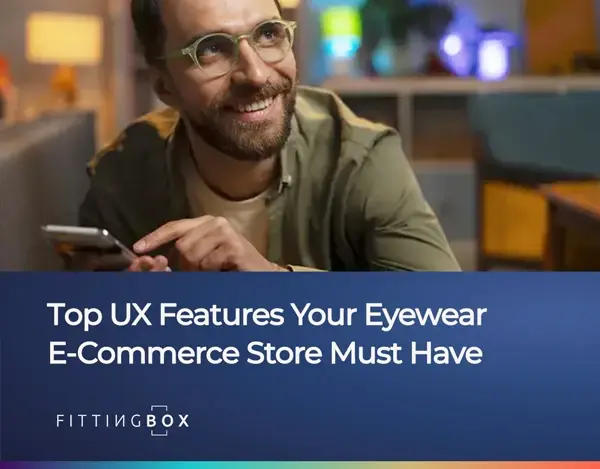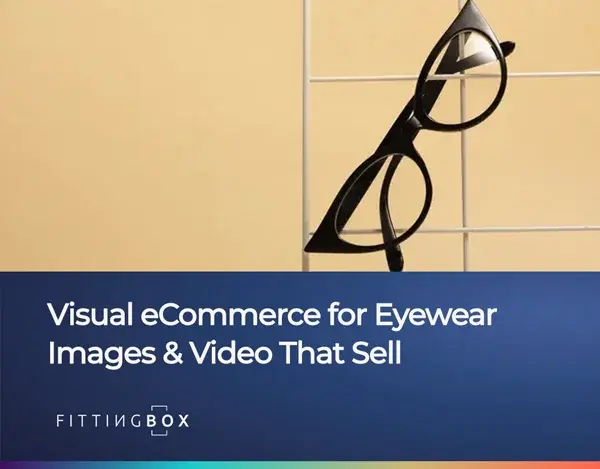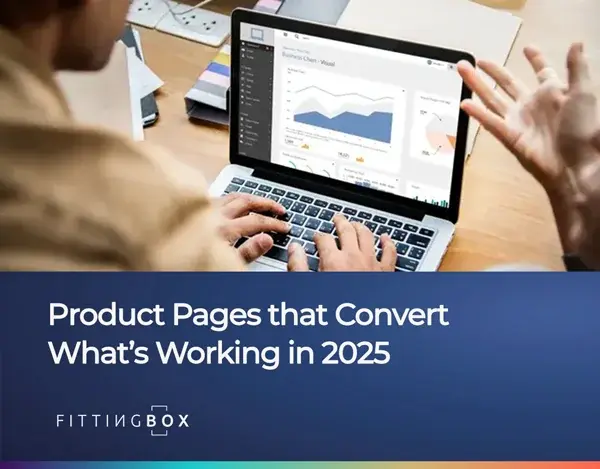
How to Boost Eyewear Mobile Conversions with Seamless UX
The rise of mobile browsing has reshaped how people shop for glasses online. Today, most customers explore eyewear collections, compare frame styles, and even try on glasses virtually, all from their phones. But if the user experience is clunky or slow, conversions drop fast.
A seamless mobile UX is no longer optional; it’s a core driver of success. In this article, you'll learn how optimizing mobile UX can significantly improve your conversion rates, supported by best practices and real-world examples tailored to the eyewear market.
🔑 Key Takeaways
- Optimizing mobile UX is crucial as over 71% of eyewear shopping happens on smartphones in 2025.
- Conversions drop by 20% for each extra second of mobile load time. Speed directly impacts sales.
- Virtual try-on and PD measurement tools on mobile increase buying confidence and reduce cart abandonment.
- Clear navigation and 3D viewers on mobile help users explore eyewear in a frictionless, intuitive way.
- Real-world case studies show that UX improvements can raise conversions by up to 29% on mobile.
.webp?width=700&height=467&name=photo-beautiful-female-tourist-uses-modern-phone-credit-card-booking-ticket-online%20(1).webp)
Why Mobile UX Matters in Eyewear E-Commerce
Mobile traffic dominates the eyewear e-commerce landscape. In 2025, over 71% of online retail visits come from mobile devices, with eyewear being no exception. For optical retailers, this means their mobile interface often serves as the first and sometimes only point of contact with potential customers.
Unlike desktop shoppers, mobile users interact with smaller screens, slower connections, and less time. They expect fast load times, simple navigation, and intuitive interfaces. A mobile site that delivers this kind of streamlined experience is much more likely to convert visitors into buyers. In fact, conversion rates drop by up to 20% for every second of delay in mobile load time.
Eyewear shopping adds extra complexity. Customers want to see frames clearly, compare models, and try on glasses virtually. If your site doesn’t support features like virtual fitting on mobile devices or the ability to measure pupillary distance without hassle, you risk losing users before they even reach the cart.
For eyewear brands, optimizing mobile UX is essential not just for engagement but also for ROI. Whether customers are shopping at home or on the go, they must enjoy a smooth and satisfying experience to complete their purchase confidently.
Key UX Frictions That Kill Mobile Conversions
Even the most attractive eyewear products can underperform if the mobile experience is frustrating. Identifying and removing friction points is critical to keeping users engaged and guiding them to purchase. Let's explore the most common UX obstacles specific to mobile eyewear shopping.
Slow Load Times and Laggy Interactions
Time is critical. 53% of users abandon a mobile site if it takes more than 3 seconds to load. Eyewear sites often feature rich visuals and interactive content like 3D viewers or virtual try-on. If these tools are not optimized for mobile, they may delay loading and hurt conversions.
Cluttered Navigation and Small Touch Targets
Tiny buttons, overcrowded menus, and poor layout can frustrate mobile users. Without clear access to key features, such as search, filters, or frame categories, browsing becomes tedious. Worse, users may misclick due to touch elements that are too close or too small.
Missing or Inefficient Virtual Try-On
Customers increasingly expect to try on frames virtually before buying. Yet, many eyewear sites still lack seamless mobile try-on functionality. Redirecting users to desktop or asking for app downloads interrupts the journey, often resulting in drop-off.
Poor Display of Frame Details
On mobile, visual clarity is vital. If users can't zoom in on frames, see them from multiple angles, or preview color variants smoothly, they lose confidence in their choice. A lack of immersive 3D display on mobile devices diminishes engagement and trust.
Mobile UX Best Practices for Eyewear Brands
Optimizing mobile UX for eyewear isn’t about guesswork, it’s about applying proven design and functionality principles tailored to mobile behaviors. By adopting the following best practices, you can reduce friction, improve engagement, and increase mobile conversions effectively.
Design with a Mobile-First Approach
Start with the smallest screen. Ensure your mobile interface loads quickly, adapts to screen orientation, and uses touch-friendly components. A clean, responsive layout helps visitors focus on frames without distraction.
Enable Instant Access to Key Features
Users must easily find filters, categories, and search tools. For eyewear, offer filtering by shape, color, material, or face shape. Use sticky navigation and floating buttons to guide users intuitively through your product catalog.
Integrate Virtual Try-On Seamlessly
One of the most impactful features is the ability to try on glasses virtually via smartphone. A seamless try-on interface that doesn’t require a separate app maximizes engagement and reduces bounce. This tool increases buying confidence and speeds up decision-making.
Offer Integrated Pupillary Distance Measurement
Mobile users appreciate convenience. Incorporating a tool to measure pupillary distance directly from the mobile site simplifies the prescription process and eliminates guesswork. It also demonstrates technical sophistication and brand reliability.
Use 3D Viewers for Realistic Product Visualization
Visual clarity boosts trust. Allow users to rotate, zoom, and inspect frames in detail with a mobile-optimized 3D viewer for glasses. This simulates the in-store experience and helps replicate tactile evaluation virtually.
.webp?width=700&height=467&name=render%20(1).webp)
Case Studies: UX Improvements That Drove Results
Many eyewear retailers have achieved measurable gains by refining their mobile UX. These improvements often center around integrating advanced tools and removing friction points in the purchase journey. Let’s examine a few practical examples.
Retailer A: Virtual Try-On Raised Conversions by 29%
A European optical retailer implemented mobile-based virtual fitting for their full product catalog. By allowing shoppers to see how frames looked in real time using their phone’s camera, the brand saw a 29% increase in mobile conversions within 60 days. Bounce rates also dropped by 16%.
Retailer B: Faster Load Times and Streamlined Design
Another brand noticed their mobile site was taking over 5 seconds to load. After compressing images and optimizing scripts, their load time dropped below 2 seconds. Combined with a cleaner layout and larger touch zones, they recorded a 21% uplift in completed purchases.
Retailer C: PD Measurement and 3D Viewer Combined
By offering both mobile pupillary distance measurement and a frame 3D viewer optimized for smartphones, this eyewear brand enabled customers to feel confident about fit and style. As a result, their cart abandonment rate decreased by 18%, while product return requests went down by 12%.
These case studies show that investing in mobile UX directly impacts revenue. Features like virtual try-on, PD measurement, and 3D visualization aren’t just extras, they are conversion enablers in a competitive market.
Conclusion
For eyewear retailers, boosting mobile conversions begins with delivering a seamless, intuitive, and engaging user experience. From virtual try-on to PD measurement and responsive design, each element of the mobile journey can influence customer decisions.
By removing friction and integrating smart tools, you not only improve conversions but also build trust and satisfaction. In a market where mobile dominates, refining UX is no longer optional, it’s essential.
LET'S TALK
Request a demo, a quote or set up an appointment with one of our sales representatives.
CONTACT USUseful Links
Corporate
© FITTINGBOX 2025 • Terms of use • Privacy & Legal



